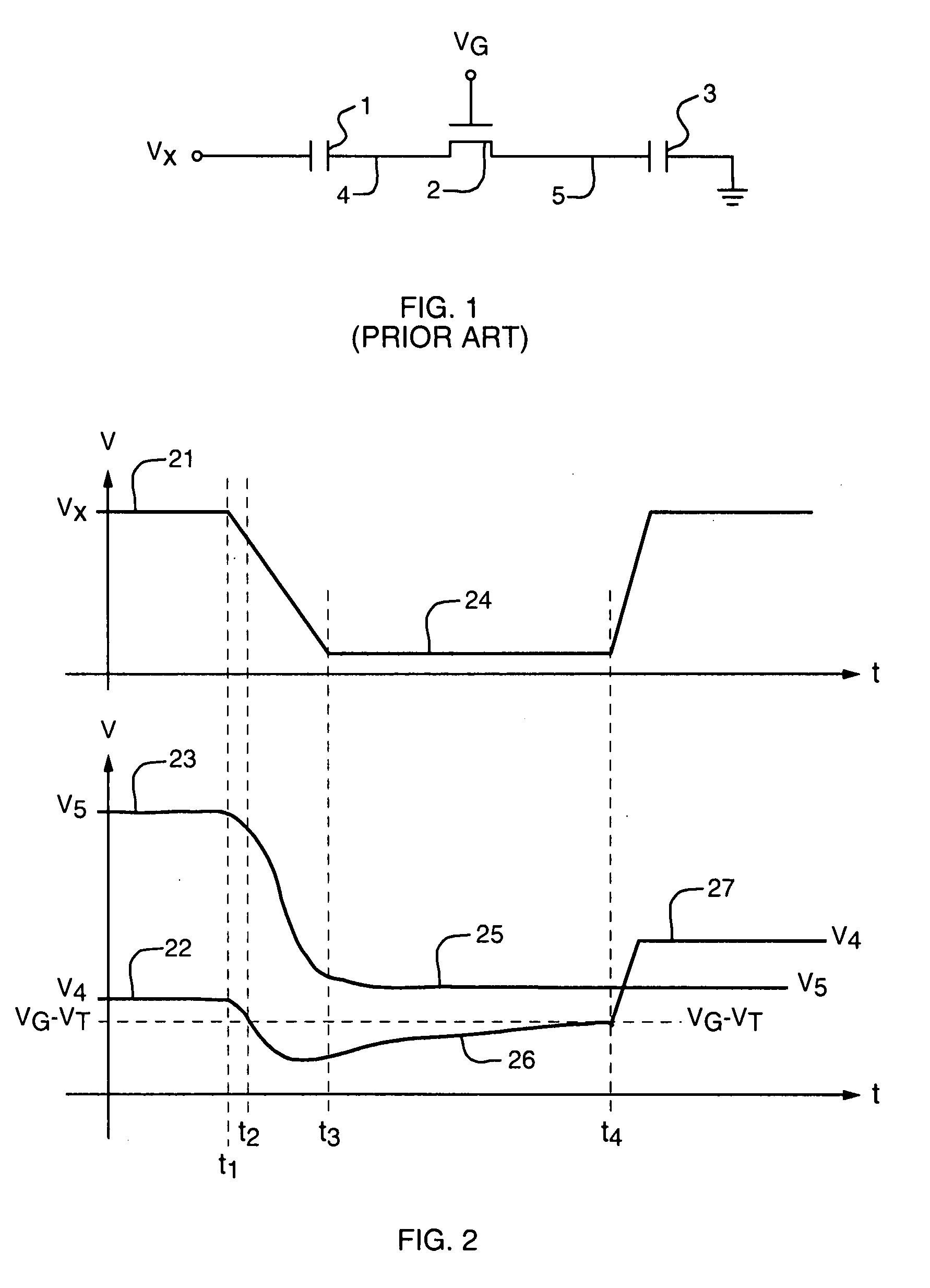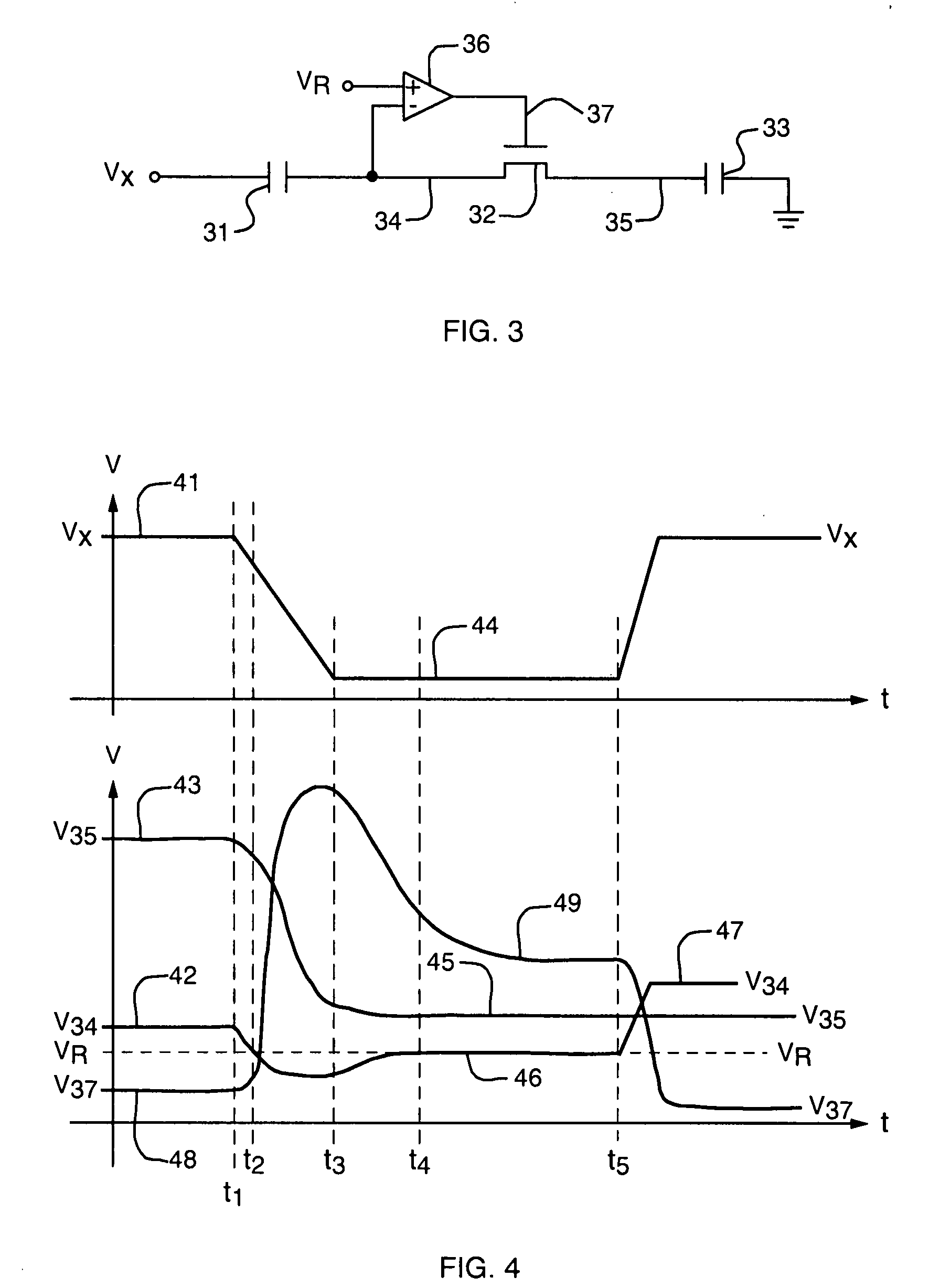Boosted charge transfer circuit
a charge transfer circuit and boosted technology, applied in the field of boosted charge transfer circuits, can solve the problems of unacceptably long settling time of node b>4/b>, the effect of reducing the effect of the two error sources described above and sufficiently improving the performance of the boosted charge transfer circui
- Summary
- Abstract
- Description
- Claims
- Application Information
AI Technical Summary
Benefits of technology
Problems solved by technology
Method used
Image
Examples
Embodiment Construction
[0031] A description of preferred embodiments of the invention follows.
[0032] The present invention provides a charge-transfer circuit in which the effects of the two error sources described above are significantly reduced. In contrast to the passive charge transfer used in conventional BBDs, the charge transfer method of the present invention is termed “boosted”. The performance of a boosted charge-transfer circuit is sufficiently improved over that of the passive circuit that it makes high-speed, high-precision applications feasible. This boosted charge-transfer technique can be understood with the aid of FIGS. 3 and 4, which illustrate the basic features of its operation.
[0033] The elements of FIG. 3 are the same as similarly-identified elements of FIG. 1, except for the addition of amplifier 36 and its reference voltage VR, and the omission of voltage VG. Capacitor 31 in FIG. 3 corresponds to capacitor 1 in FIG. 1, node 34 to node 4, etc. The added amplifier 36 is the unique f...
PUM
 Login to View More
Login to View More Abstract
Description
Claims
Application Information
 Login to View More
Login to View More - R&D
- Intellectual Property
- Life Sciences
- Materials
- Tech Scout
- Unparalleled Data Quality
- Higher Quality Content
- 60% Fewer Hallucinations
Browse by: Latest US Patents, China's latest patents, Technical Efficacy Thesaurus, Application Domain, Technology Topic, Popular Technical Reports.
© 2025 PatSnap. All rights reserved.Legal|Privacy policy|Modern Slavery Act Transparency Statement|Sitemap|About US| Contact US: help@patsnap.com



